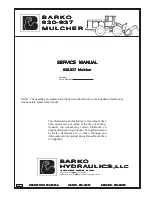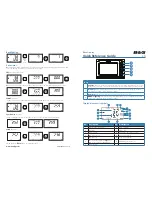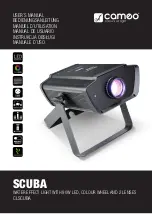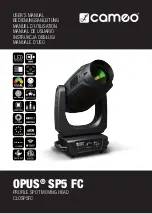
ENGLISH
Protectoplus Lager- und Umwelttechnik GmbH
, Tel. +49 4331/4516-0, Fax +49 4331/4516-11
Internet:
www.protecto.de
, E-mail:
- 61 -
•
Installation location: the capacity of the recirculating air filter is intended for
cleaning the air volume from the cabinet (cabinet volume x air turnover).
Since the exchange air is taken from the ambient air via cabinet air intake, it
must be taken into account that the concentration of pollutants is influenced
by the composition of the ambient air. The total concentration of pollutants
before the filter is therefore composed of the sum of the cabinet and ambient
concentrations. When installing the cabinet, make sure that the ambient air is
pollutant-neutral. The device provides an indication of the quality of the
ambient air using the four-level "DAS" brightness display (in the normal state,
the LED does not light up). The brightness levels are visible in test mode -
operation of the test button.
Polluted air circulation can result in frequently occurring fault messages and
can eventually lead to shutdowns due to increased concentration values. In
order to ensure the normal operation of the system, the following installation
situations should be avoided:
o
Proximity of cleaning facilities where solvent or cleaning agents are
handled.
o
Proximity of storage of outgassing substances.
o
Proximity of workplaces that generate a lot of dust (sanding, polishing,
sand blasting etc.)
o
Proximity of workplaces that generate a lot of moisture (washing facilities,
cooking facilities, chemical/thermal surface treatment baths, dryers, etc.)
o
Proximity of nearby painting activity
o
Proximity of exhaust gas emissions (engine tests in repair shops, forklift
traffic, incinerators etc.)
•
Installation and commissioning: The device is attached to the cabinet by
means of the connection fitting (accessory). The potential-free signal outputs
are connected by the customer if necessary. The device goes into test mode
as soon as it is connected to the mains supply with the mains plug. The
LEDs, potential-free outputs and sensors are then checked one at a time.
•
Function check: A function check should be carried out whenever the device
is started up or as needed (see “Troubleshooting”). When the device is
connected, or if you press the TEST button, all lamps light up for 3 seconds.
Following this, the relays for the potential-free contacts are switched on and
off for 3 seconds each. The flow and saturation sensors are checked in the
final test sequence. The flow is checked by switching the technical
ventilation system on and off (5 seconds on, then 5 seconds off). The LEDs
for the flow change colour from RED to GREEN and the result of the test is
indicated during the pauses (RED = Error, GREEN = OK). At the end of the
test, the device automatically goes into normal mode. The exhaust air
monitoring function can also be checked by briefly covering over the exhaust
vent in order to throttle the volume flow.
•
Adjustment: The exhaust air monitoring function is set to the required flow
and saturation at the factory, so that no further adjustments are necessary
when you start up the device for the first time.
















































